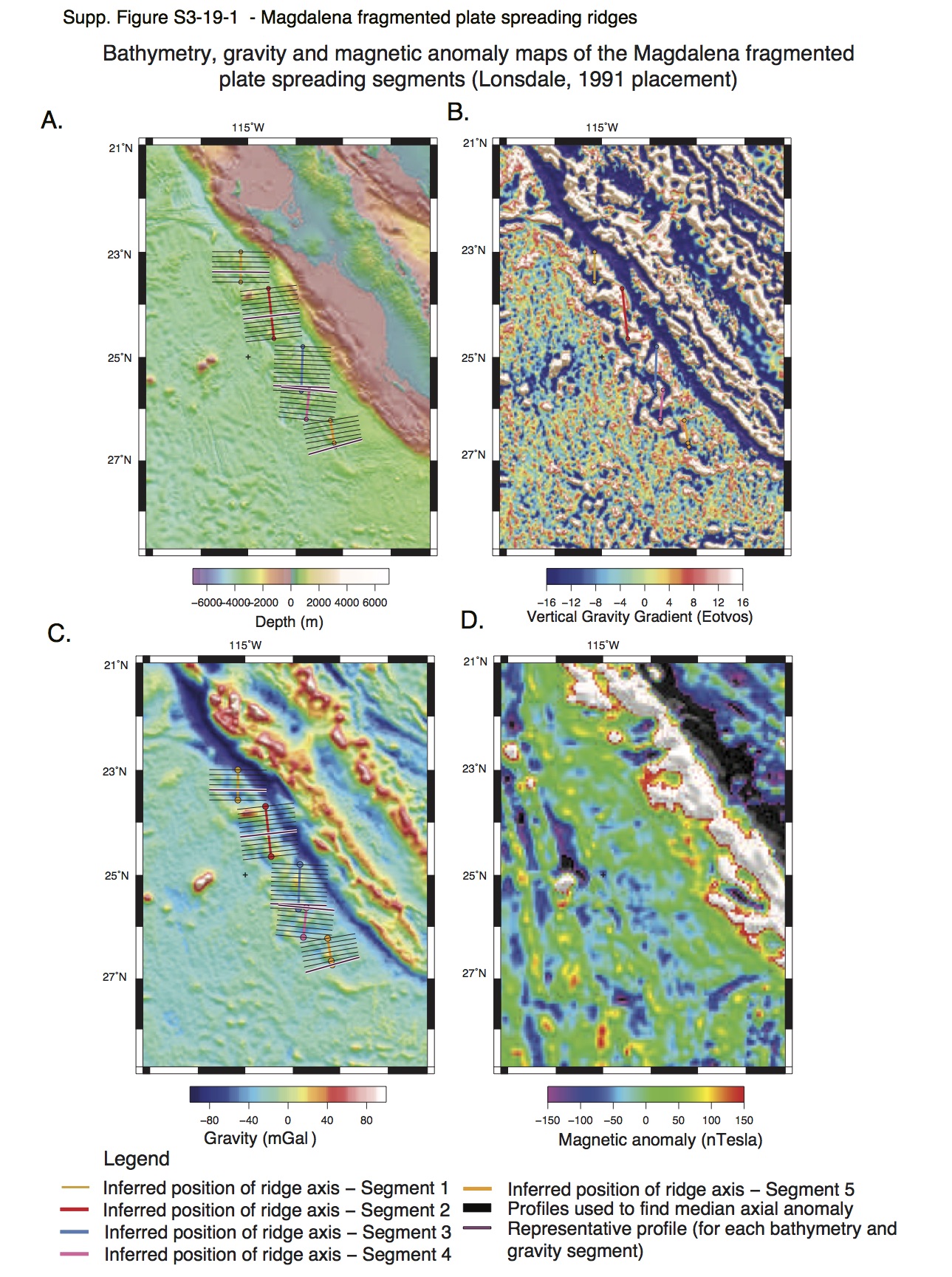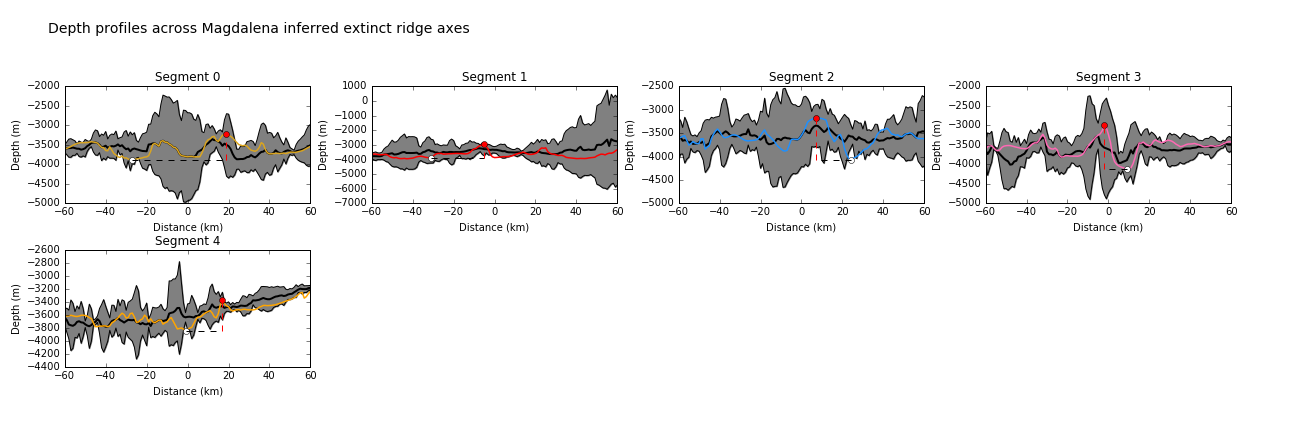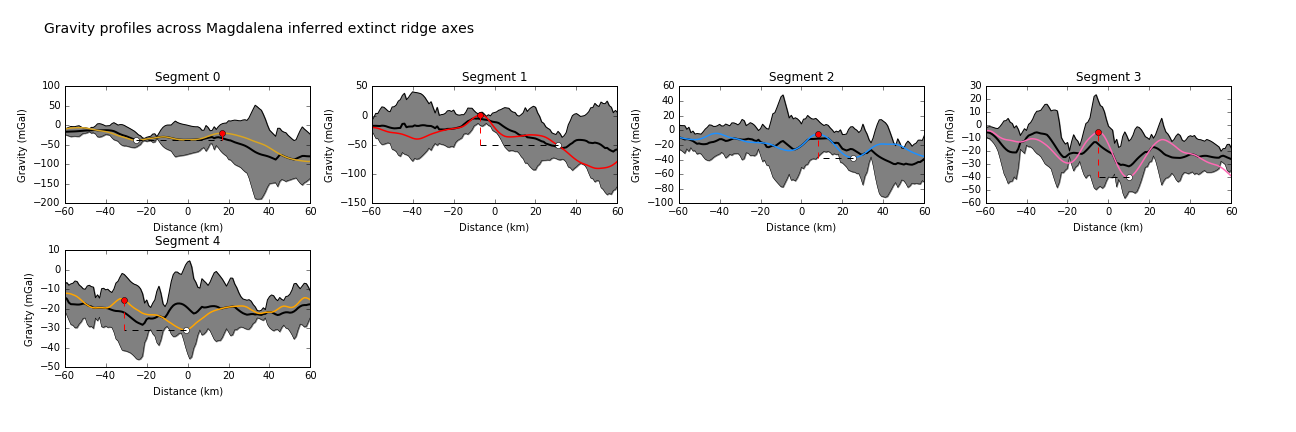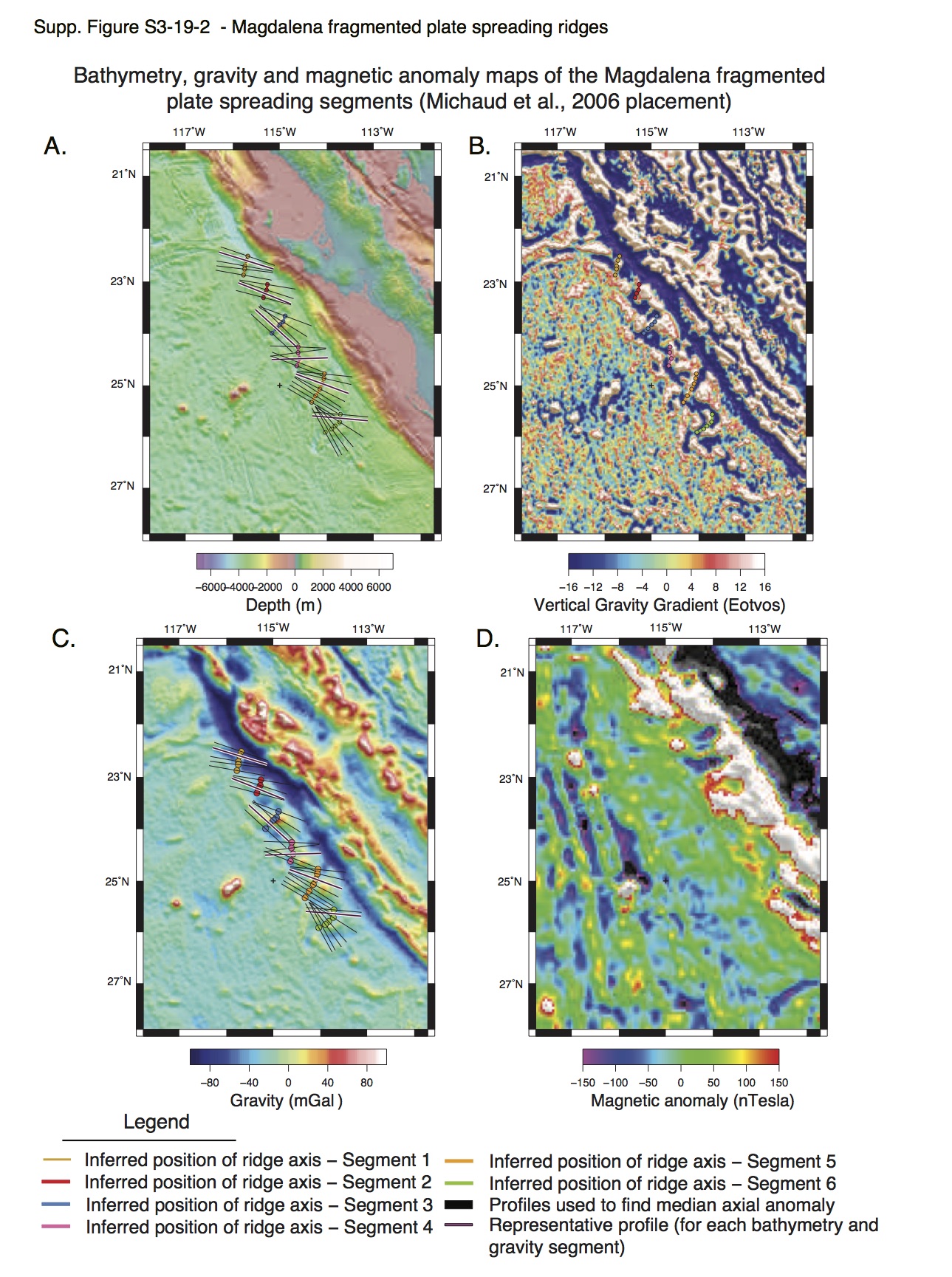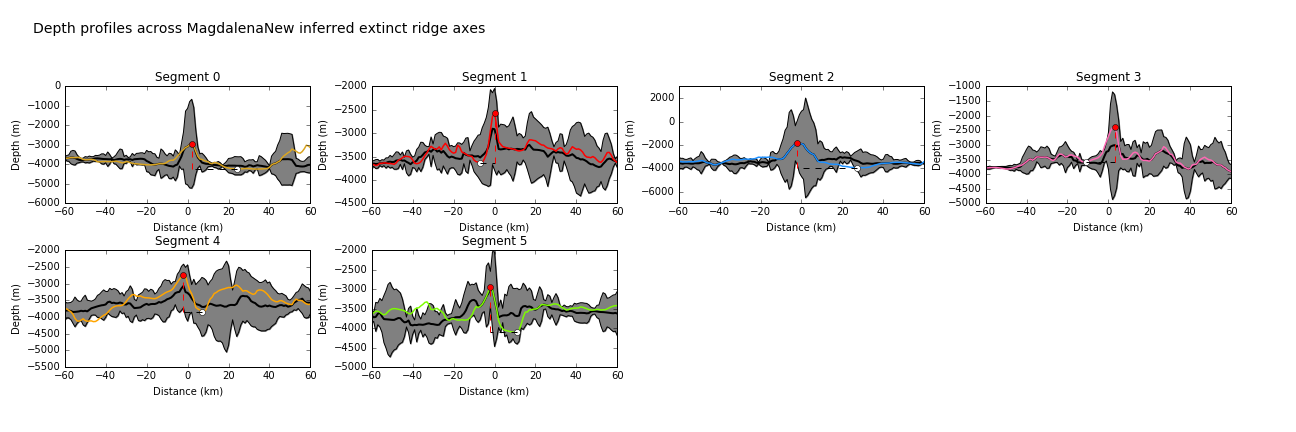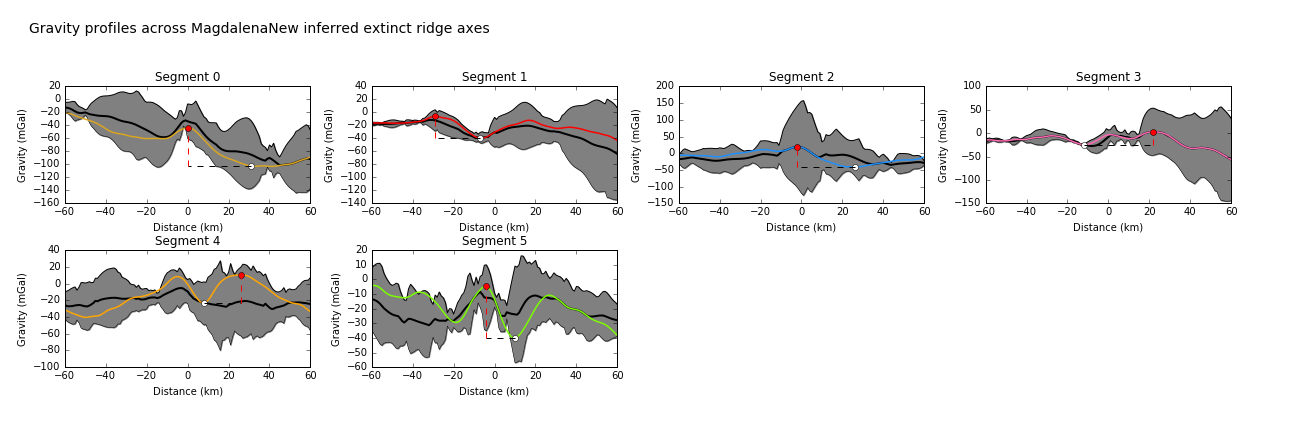| Ocean: | Pacific |
| Spreading center type: | Fragmented plate spreading ridge |
| Time of cessation: | Ca. 10 Ma, chron C4 (Lonsdale 1991), ca. 7 Ma (Michaud et al., 2005) |
| Subsequent active spreading centre: | None in immediate area |
The Magdalena spreading centre is directly south of the Guadalupe extinct ridge (ID. 3-18), offshore the western North American plate and it is a longer spreading system, stretching around 800 km. Volcanic ridges that reach shallow depth of 1500 m are also reported adjacent on the Magdalena plate (Michaud et al., 2006). Similarly to the Guadalupe plate, the Magdalena plate is thought to have formed during fragmentation of the larger Farallon plate on entry to the subduction zone situated in the Pacific north east (Lonsdale, 1991; Lonsdale, 2005) yet alternative theories have recently been proposed (Michaud et al. 2006).
Lonsdale (1991), defines the Magdalena extinct ridge as six segments, stepping out to the west, toward the north. A rough abyssal fabric is shown at the western boundary of the Magdalena plate. The location of the extinct spreading axis that was defined by Lonsdale 1991 (Figure 7) includes a segment to the north of the Guadalupe ER, called the “Soledad” segment, as another axial segment of the spreading system that ceased spreading simultaneously with the Guadulupe axial segment. Within Lonsdale’s model this segment is a failed, northward propagating segment.
Michaud et al. (2006) used detailed swath bathymetry maps from the ridge to interpret the structural features within the complex former-spreading system and identified short spreading segments, separated by strongly oblique transform faults.
The increasing obliquity of the (now extinct) subduction zone off the west coast of the USA, is argued to have caused spreading to cease at the ridge segments, which once rotated were perpendicular to the margin and congruent with the PAC-NAM relative motion. They therefore they became oblique to the subduction zone and in a region of compression, according to (Michaud et al. 2006). By this argument the spreading centre was necessary to accommodate the great difference in relative motions within this corner of the Pacific but later became redundant once both systems had ceased and motion was primarily strike-slip along this plate boundary.
We digitize and review the extinct ridge locations suggested by Lonsdale (1991) and Michaud et al. (2006). Both proposed locations present plausible options for the former spreading axis, but neither of these options feature segments that are predominantly within a standard deviation of the mean of bathymetric relief or peak-to-trough gravity signal of well-defined extinct ridges. Given that the later study of Michaud et al. (2006) incorporates higher-resolution swath bathymetry data we favour the more recent proposed extinct ridge axial segment locations.
Lonsdale, P., 1991. Structural patterns of the Pacific floor offshore of peninsula California. In, The Gulf and Peninsular Province of the Californias, AAPG Memoir 47, eds. Dauphin, J. P. and Simoneit, B. R. T., American Association of Petroleum Geologists, Tulsa.
Lonsdale, P., 2005, Creation of the Cocos and Nazca plates by fission of the Farallon plate: Tectonophysics, v. 404, no. 3–4, p. 237–264, doi:10.1016/j.tecto.2005.05.011.
Michaud, F., Royer, J.Y., Bourgois, J., Dyment, J., Calmus, T., Bandy, W., Sosson, M., Mortera-Gutiérrez, C., Sichler, B., Rebolledo-Viera, M. and Pontoise, B., 2006. Oceanic-ridge subduction vs. slab break off: Plate tectonic evolution along the Baja California Sur continental margin since 15 Ma. Geology, 34(1), pp.13–16.
